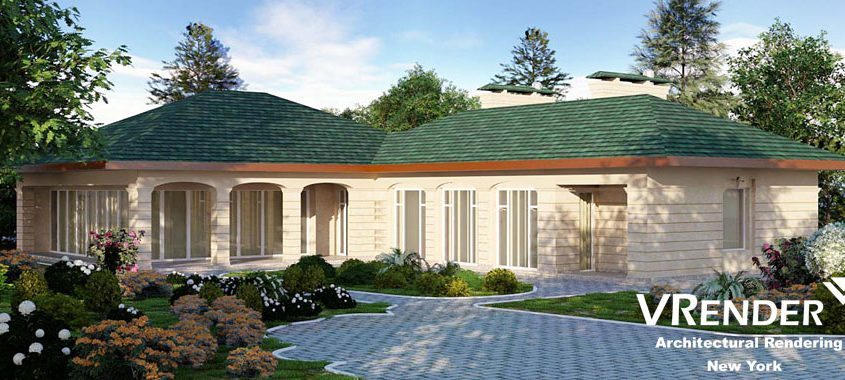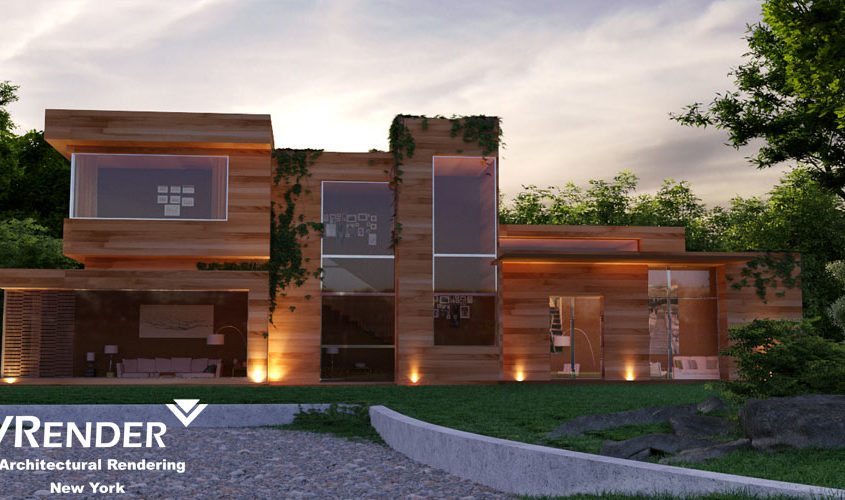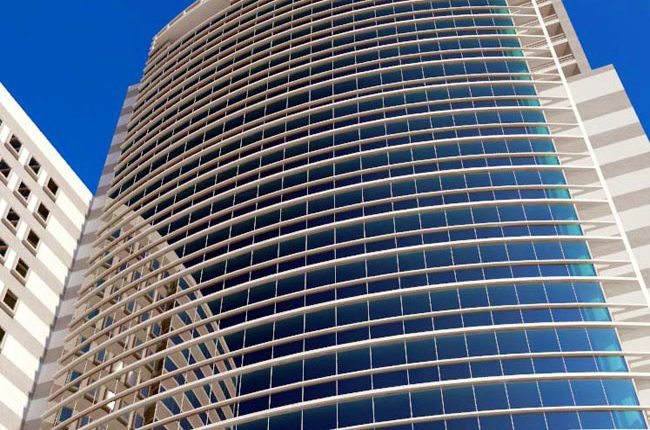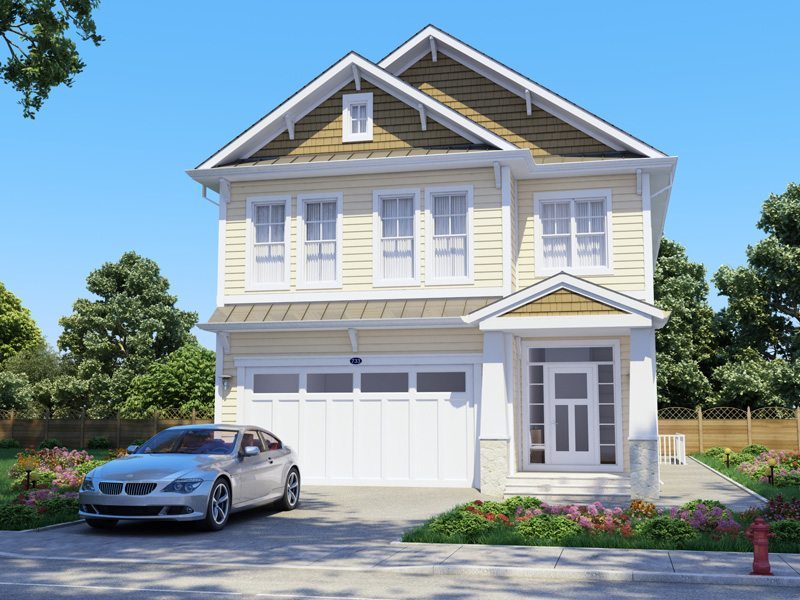Visualization of exteriors: the working process
Visualization using 3D technologies is a creative process. The result of this work is a unique image that conveys the mood of the author and leaves some impression on the viewers.
Architectural 3D visualization of exteriors is created almost every time before the beginning of the project. It largely facilitates the perception of the building, provides an opportunity to consider in details all the pros and cons, to evaluate all the architectural delights and surroundings terrain. Instead of tedious and boring drawings, accurate calculations, graphs and tables, the viewer sees an accurate 3D model of the object that is easily percepted.
However, in order to create this model, it is necessary to pass certain working stages. Let’s try to understand what the steps precede this ultimate goal – the creation of a 3D model of the exterior and let’s understand, whether it is easy or not.
So, first of all, each project requires an individual approach. In the preparation stage, analysis and planning are necessary. By breaking down a whole into simple components, it is much easier to perform the project to meet the set deadlines and a certain budget.
The main programs using which 3D images for architectural 3D visualization are created
Today 3d Studio Max software is especially popular, which offers users wide opportunities and plenty of options for high-quality and high-grade graphics. This professional software package is ideal for creating high-quality animation and three-dimensional modeling, in particular, 3D visualization of houses, buildings, facades etc. The program offers plenty of options, giving the maximum capacity.
Another program for architectural visualization and design is ArchiCAD. It is simple in usability and functionality. You can use it to implement a variety of technologies. A unique feature of this program is that it can prepare required documentation, while the architect is developing a 3D visualization of the exterior.
In addition to programs, actively used various modules and plug-ins for 3D visualization of premises, houses, buildings, facades and exteriors in general:
V-Ray is a rendering system and is used to create lightweight versions of objects.
By using such programs, a three-dimensional scene is created, after which you can proceed to architectural visualization itself. Time frames of exterior’s rendering process can range from a few hours per frame to several weeks, depending on the project, experience and software used. Another important point is the power of computer. More powerful it is – the quicker and better the process is.
So each project requires an individual approach. In the preparation step, it is necessary to analyze and plan. By breaking it down into simple components, it is much easier to carry out the project, to meet the set deadlines and to fit into a certain budget.
Main stages:
1. Development of technical specification. At this stage occurs the preparation of all necessary drawings, charts and other documents, which are full of numbers and calculations. The main task is to make accurate calculations of architecture that can be implemented in the project.
2. The calculation of cost of the future project is prepared. Here are made rough estimates for construction materials and labor. This step is necessary in order to understand if to apply 3D imaging of exterior or not.
3. Creation of a basic model of the future facility. Selection of a program to work, all the calculations are converted to graphics, initial sketches are made.
4. Creation of exterior of the desired object. The future object is fully created that you can see in 3D.
5. Addition of the finishing touches. Engagement in the development of interactive features, enhancement of image quality, addition of convenience features and options.
Thus, we can say that the process of creation of 3D-models of exterior’s visualization is quite complicated and requires specific efforts, experience and professionalism.
The final stage of visualization and buildings’ 3D exterior design can become its completion in Photoshop using various additional plug-ins, to give it a more realistic and lively outlook.
Author: Maxim S
New York, NY
e-mail: mail@vrender.com
web: https://vrender.com
© Copyright Vrender.com 2016.








